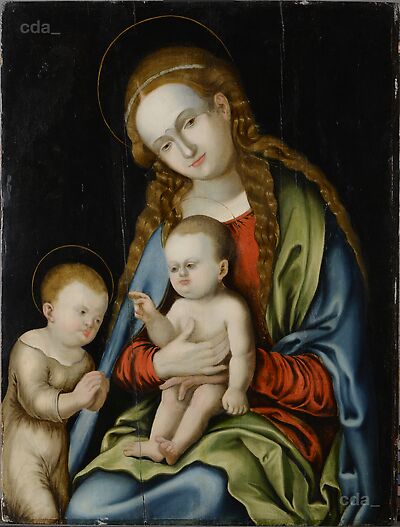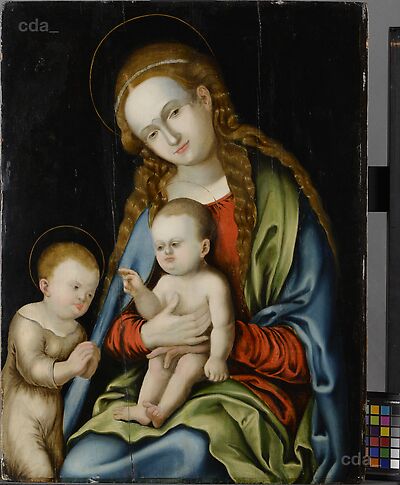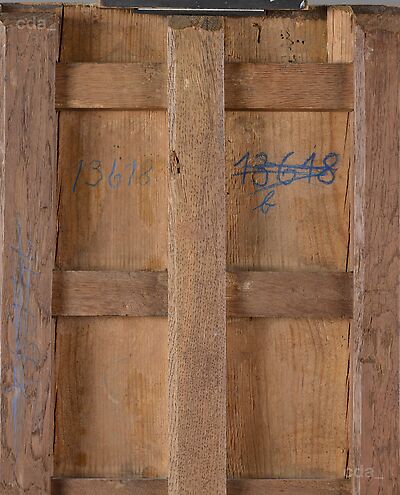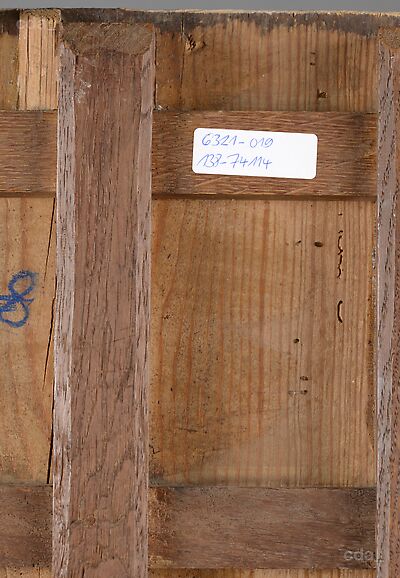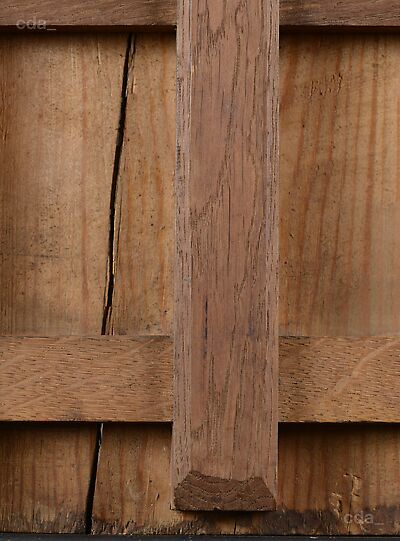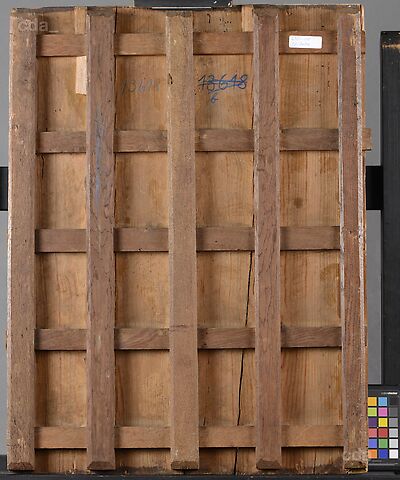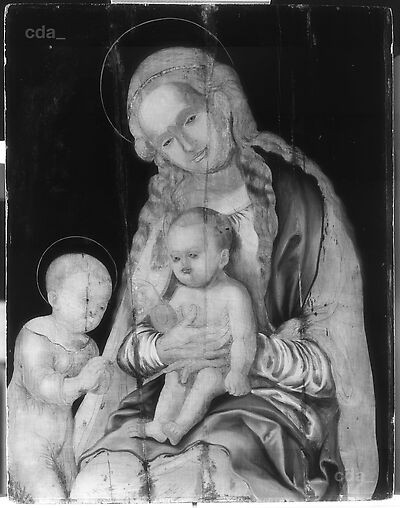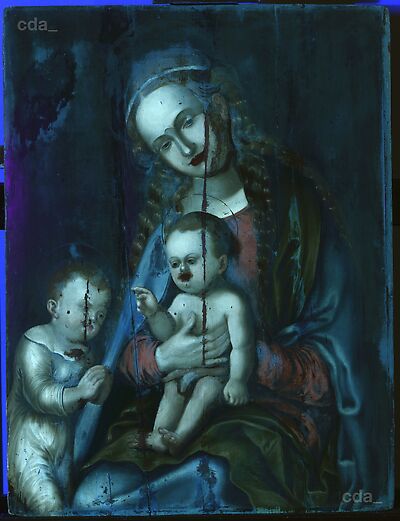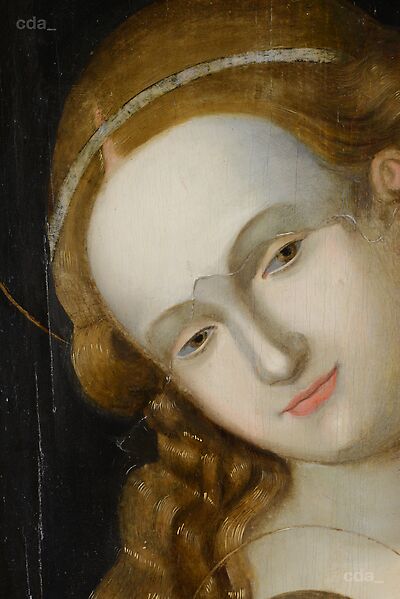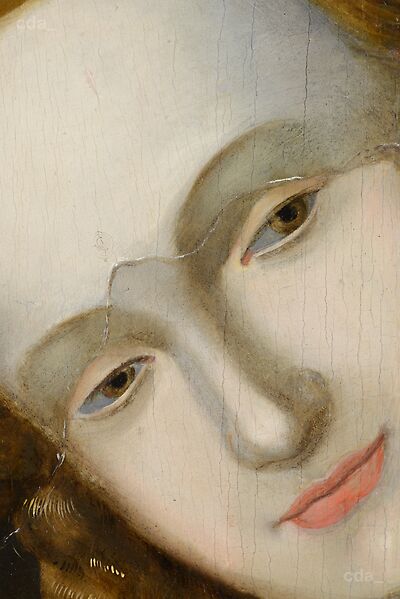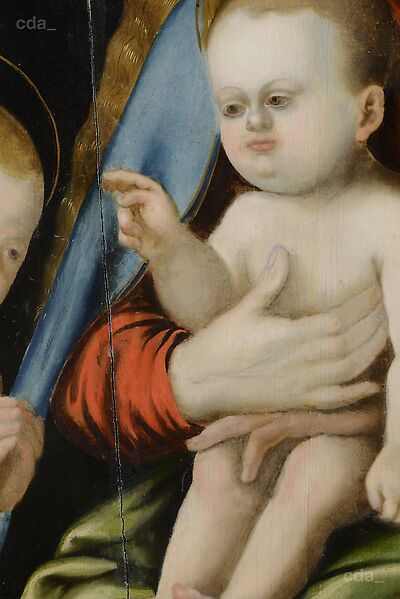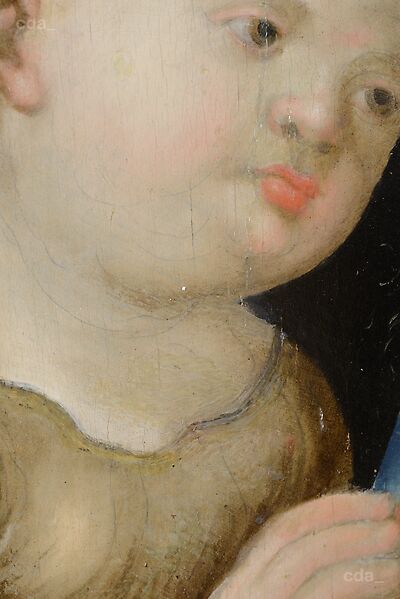- Attribution
- Copy after Lucas Cranach the Elder
Attribution
| Copy after Lucas Cranach the Elder | [Blumenroth, Heydenreich, Wu, unpublished examination report, 21.07.2022] |
- Production date
- about 1541 - 1899
Production date
| about 1541 - 1899 | Could have been painted anytime between about 1541 and the 19th century [Blumenroth, Heydenreich, Wu, unpublished examination report, 21.07.2022] |
- Dimensions
- Dimensions of support: 66.6 x 50.5 cm
Dimensions
Dimensions of support: 66.6 x 50.5 cm
[Blumenroth, Heydenreich, Wu, unpublished examination report, 21.07.2022]
- Signature / Dating
The artist's insignia, a serpent with dropped wings, and the date '1520' are not genuine.
Signature / Dating
The artist's insignia, a serpent with dropped wings, and the date '1520' are not genuine.
[Blumenroth, Heydenreich, Wu, unpublished examination report, 21.07.2022]
- Inscriptions and Labels
none Reverse of the panel: - with a blue pen: '13618'; '13618 [crossed out] b'
On a cradle …Inscriptions and Labels
Inscriptions, Badges:
none
Stamps, Seals, Labels:
Reverse of the panel: - with a blue pen: '13618'; '13618 [crossed out] b'
On a cradle member:
- '14098' [crossed out] and a label '6321-019 / 138-74114'.
[Blumenroth, Heydenreich, Wu, unpublished examination report, 21.07.2022]
- Owner
- Private Collection
- Repository
- Private Collection
- CDA ID
- PRIVATE_NONE-P567
- FR (1978) Nr.
- FR-none
- Persistent Link
- https://lucascranach.org/en/PRIVATE_NONE-P567/
